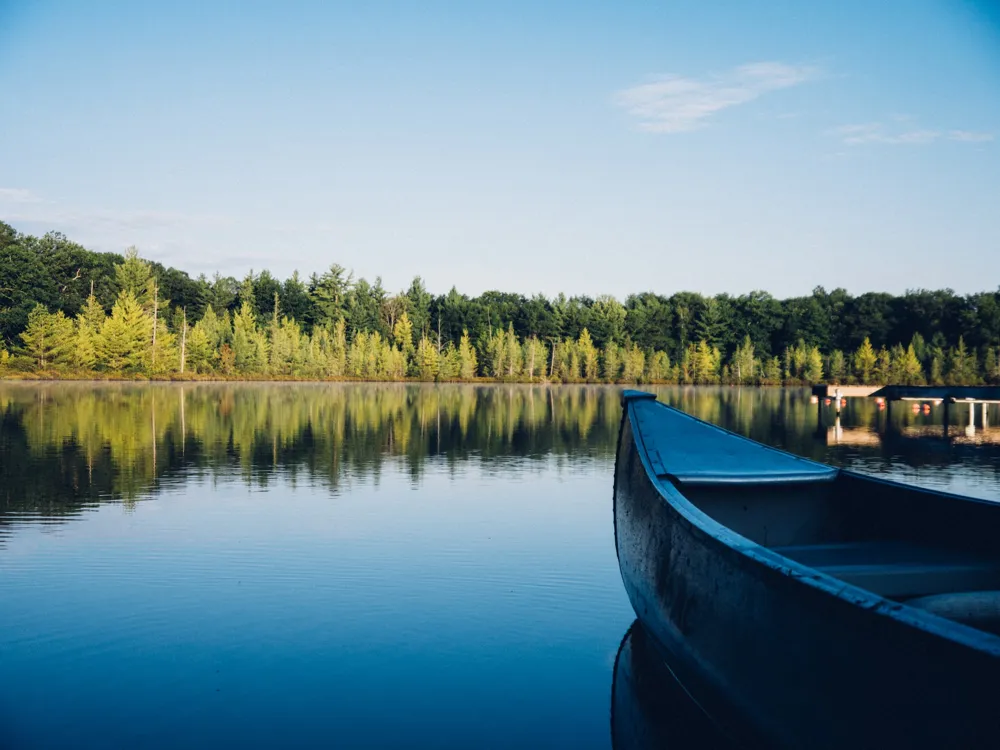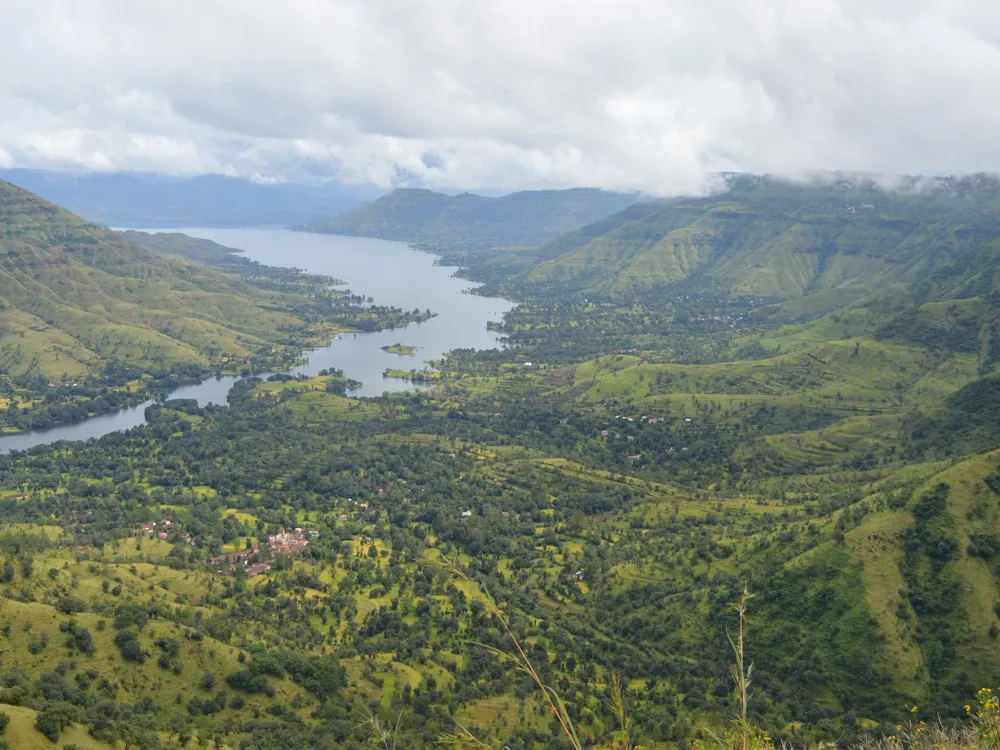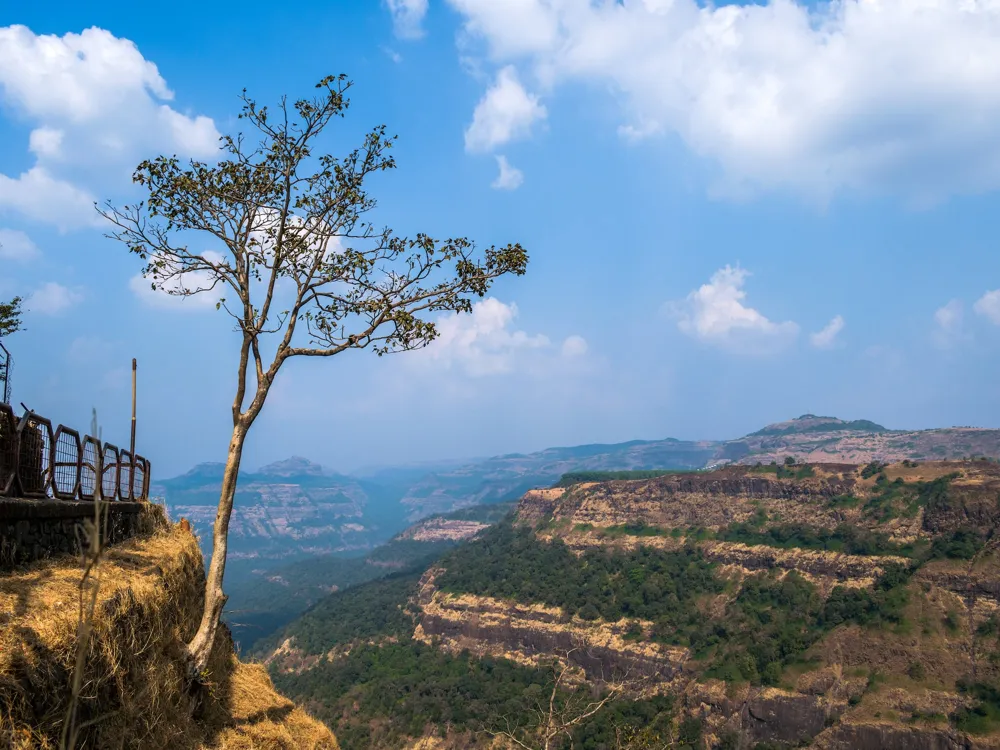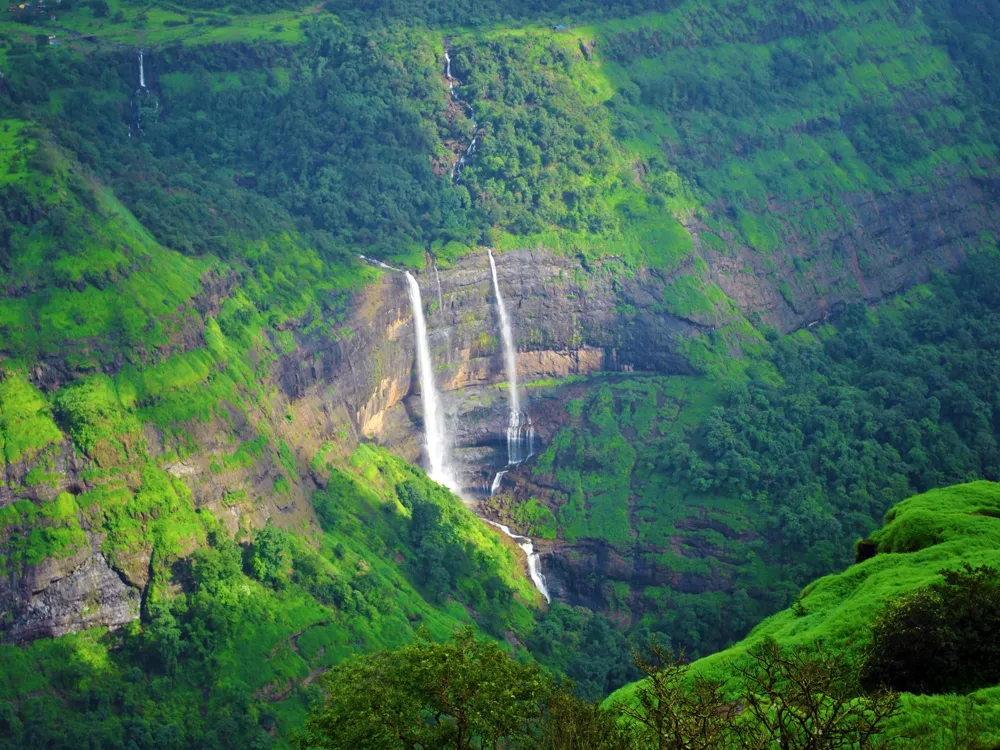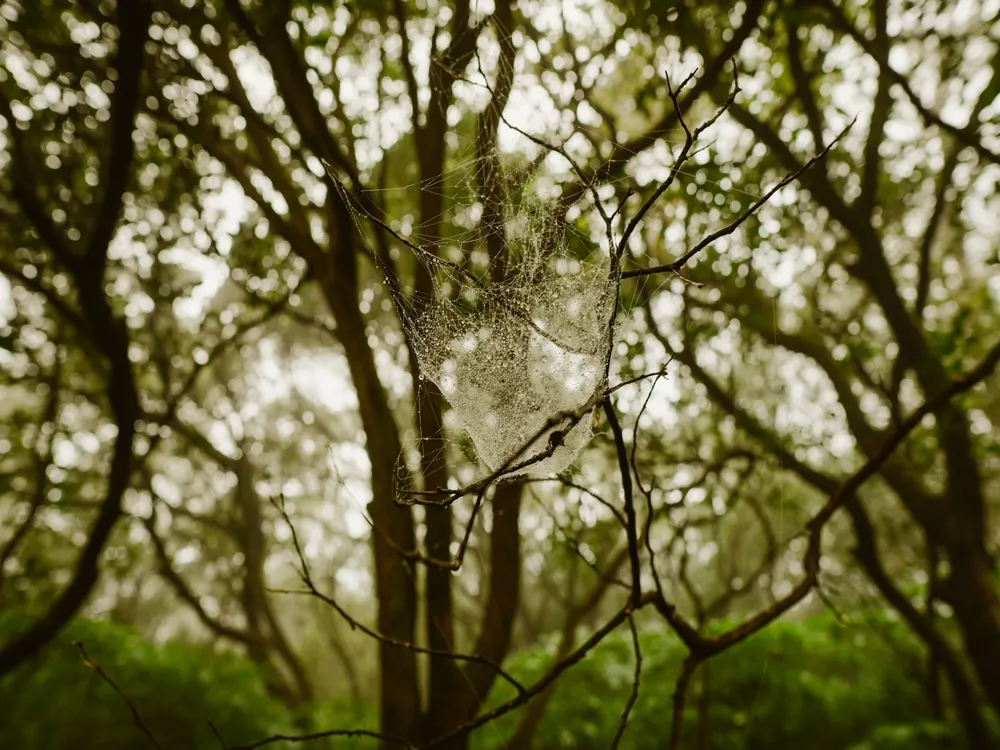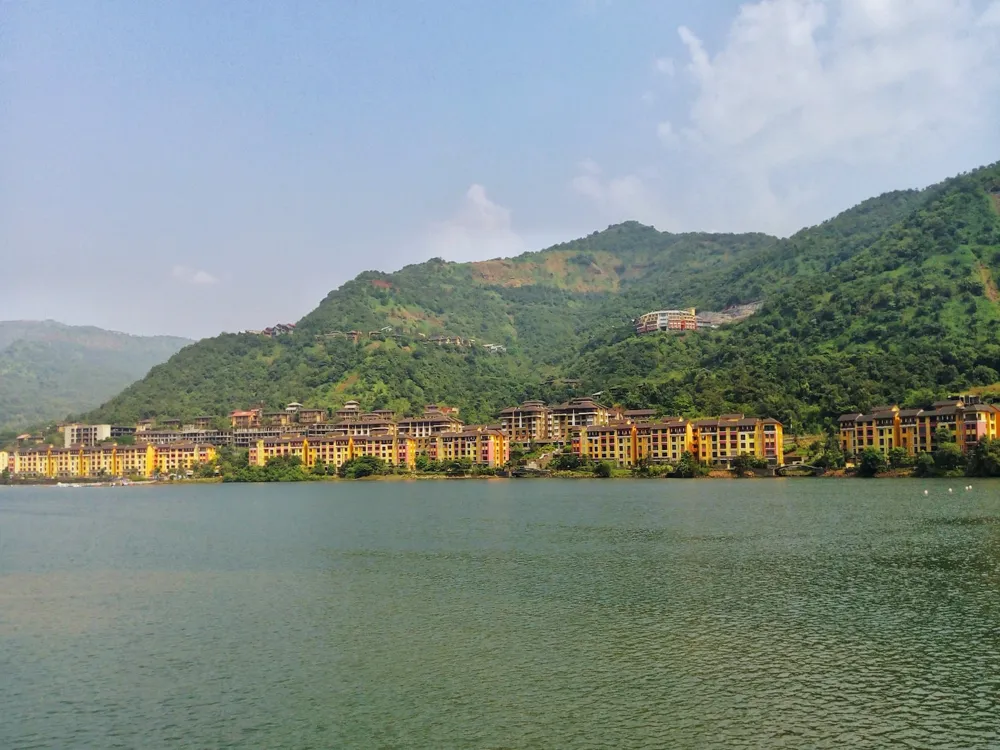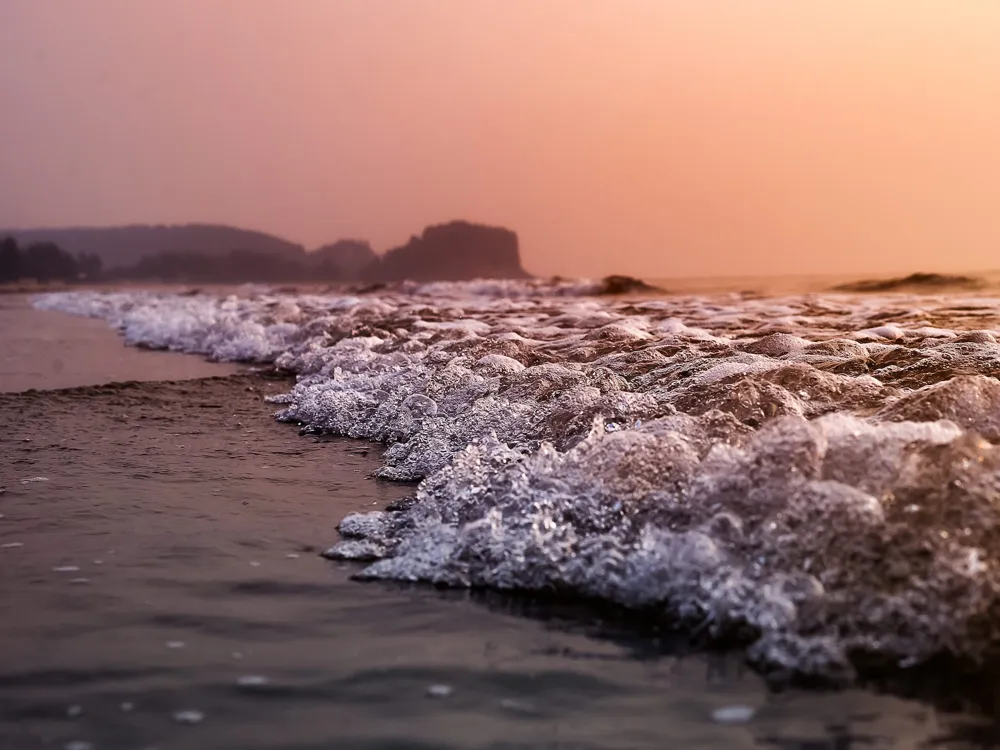Nestled in the serene hills of Matheran, Maharashtra, Alexander Point is a picturesque destination that captures the essence of natural beauty and tranquility. This enchanting spot, named after a British officer, is famed for its panoramic views that offer a feast for the eyes and a retreat for the soul. The unique location of Alexander Point, perched at an elevation, provides a bird's eye view of the lush green valleys and cascading waterfalls that define the landscape of Matheran. The point is a haven for nature lovers, photographers, and anyone seeking solace away from the hustle and bustle of city life. The charm of Alexander Point lies in its unspoiled natural beauty, which has been preserved over the years, making it a timeless destination for visitors. Alexander Point stands out for its strategic location in Matheran, which is the smallest hill station in India and is renowned for its biodiversity. The point is situated on the eastern side of Matheran, offering a splendid view of the surrounding areas, including the Bhivpuri Power House Towers and the quaint village of Borgaon. The verdant landscapes around Alexander Point are a part of the Western Ghats, a UNESCO World Heritage site, known for their rich flora and fauna. This geographical marvel is not just a visual treat but also an ecological hotspot that contributes significantly to the biodiversity of the region. The cultural and historical significance of Alexander Point is intertwined with the legacy of Matheran as a British-era hill station. Established in the 19th century by the British, Matheran was a popular summer retreat for British officers, including Alexander, after whom the point is named. The historical narratives of Alexander Point are reflective of the colonial era, and this legacy continues to be a part of its charm. The point serves as a living testimony to the colonial history of India and offers a glimpse into the past through its untouched natural scenery, reminiscent of the times when it was a favored spot among the British elite. The biodiversity at Alexander Point is a testament to the rich natural heritage of Matheran. The area around the point is dotted with a variety of flora, including rare and endemic species of plants and trees. The dense forests surrounding the point are home to a myriad of bird species, making it a paradise for bird watchers. The monsoon season brings a dramatic transformation to the landscape, with the forests turning lush green and waterfalls springing to life, adding to the point's enchanting beauty. The unique ecosystem at Alexander Point is not only a source of natural beauty but also plays a crucial role in maintaining ecological balance. Visitors to Alexander Point are treated to an array of experiences that cater to diverse interests. The point is a favorite among trekkers and nature enthusiasts who find solace in its tranquil surroundings. The breathtaking sunrise and sunset views from the point are a highlight for many, offering moments of sheer awe and wonder. For photography enthusiasts, the point provides numerous opportunities to capture the stunning landscapes and the interplay of light and shadow during different times of the day. The simplicity and rustic charm of Alexander Point make it a perfect getaway for those looking to disconnect from the digital world and reconnect with nature. The architecture of Alexander Point is not marked by grand structures or elaborate designs but is characterized by its minimalistic and natural setting. The point itself is devoid of any man-made architectural elements, preserving its natural allure. However, the architectural influence in the vicinity of Alexander Point can be seen in the British-era buildings and structures in Matheran. These colonial buildings, with their distinct style, add a historical dimension to the area and blend seamlessly with the natural landscape. The architecture in Matheran is a blend of Indian and British styles, reflecting the cultural fusion during the colonial era. The use of local materials and the emphasis on sustainability in these structures make them an integral part of Matheran's architectural heritage. The colonial influence in the architecture near Alexander Point is evident in the old bungalows and hotels that date back to the British period. These structures are characterized by high ceilings, large verandas, and red-tiled roofs, reflecting the British architectural style adapted to the local climate. The use of wood and stone in these buildings is a testament to the sustainable practices of the era. The charm of these colonial buildings lies in their simplicity and their harmonious coexistence with the natural surroundings, offering a glimpse into the architectural legacy of the British era in India. A defining feature of the architecture in the vicinity of Alexander Point is its integration with the natural environment. The buildings are designed to blend with the landscape, ensuring minimal disruption to the natural setting. The use of local materials, such as stone and wood, in construction, and the focus on sustainability, are reflective of the architectural ethos of the region. The architecture around Alexander Point is a lesson in how man-made structures can coexist with nature without compromising on aesthetic appeal or ecological balance. The preservation of the architectural heritage near Alexander Point is crucial to maintaining the historical and cultural identity of Matheran. Efforts have been made to protect and restore the colonial-era buildings, ensuring their longevity and historical significance. The conservation of these structures is not just about preserving the past but also about sustaining the unique architectural character that defines the charm of Matheran and its attractions like Alexander Point. While the architectural landscape near Alexander Point is predominantly defined by its colonial past, there have been contemporary developments that blend modern design with traditional aesthetics. These newer structures are designed with a focus on eco-friendliness and sustainability, aligning with the environmental ethos of Matheran. The contemporary architecture in the area is a testament to the evolving architectural narrative while still respecting the historical and natural essence of the region. The ideal time to visit Alexander Point is during the post-monsoon and winter months, from October to March. During this time, the weather is pleasant, and the natural beauty of the area is at its peak, with lush greenery and clear views. Visitors should bring comfortable walking shoes, water bottles, snacks, a camera, and a light jacket, as the weather can be cool, especially in the mornings and evenings. It's also advisable to carry a raincoat during the monsoon season. It's important to practice responsible tourism by not littering, respecting the natural environment, and adhering to local guidelines and regulations to preserve the pristine condition of Alexander Point. Visitors should be aware of their physical limits while trekking or exploring the area. It's advisable to stay on marked trails and be cautious near cliff edges. Carrying a basic first-aid kit is also recommended. Alexander Point is accessible via Matheran, which is well-connected by road and rail. The nearest railway station is Neral, from where visitors can take a toy train or hire a taxi to Matheran. Once in Matheran, Alexander Point can be reached by a scenic walk or by hiring a horse. The journey to Alexander Point is as enchanting as the destination itself, offering glimpses of the beautiful landscape of Matheran. Read More:Overview of Alexander Point in Matheran, Maharashtra
Geographical Significance
Cultural and Historical Context
Flora and Fauna
Visitor Experiences
Architecture of Alexander Point
Colonial Influence in Architecture
Integration with Nature
Preservation of Architectural Heritage
Contemporary Architectural Developments
Tips When Visiting Alexander Point
Best Time to Visit
What to Bring
Responsible Tourism
Health and Safety
How To Reach Alexander Point
Alexander Point
Matheran
Maharashtra Goa
NaN onwards
View matheran Packages
Weather :
Tags : Viewpoint
Timings : 5:00 AM - 6:00 PM
Time Required : 2-3 hrs
Entry Fee : No entry fee
Best time to visit : Sunrise and Sunset
Planning a Trip? Ask Your Question
Matheran Travel Packages
View All Packages For Matheran
Top Hotel Collections for Matheran

Private Pool

Luxury Hotels

5-Star Hotels

Pet Friendly
Top Hotels Near Matheran
Other Top Ranking Places In Matheran
View All Places To Visit In matheran
View matheran Packages
Weather :
Tags : Viewpoint
Timings : 5:00 AM - 6:00 PM
Time Required : 2-3 hrs
Entry Fee : No entry fee
Best time to visit : Sunrise and Sunset
Planning a Trip? Ask Your Question
Matheran Travel Packages
View All Packages For Matheran
Top Hotel Collections for Matheran

Private Pool

Luxury Hotels

5-Star Hotels

Pet Friendly










